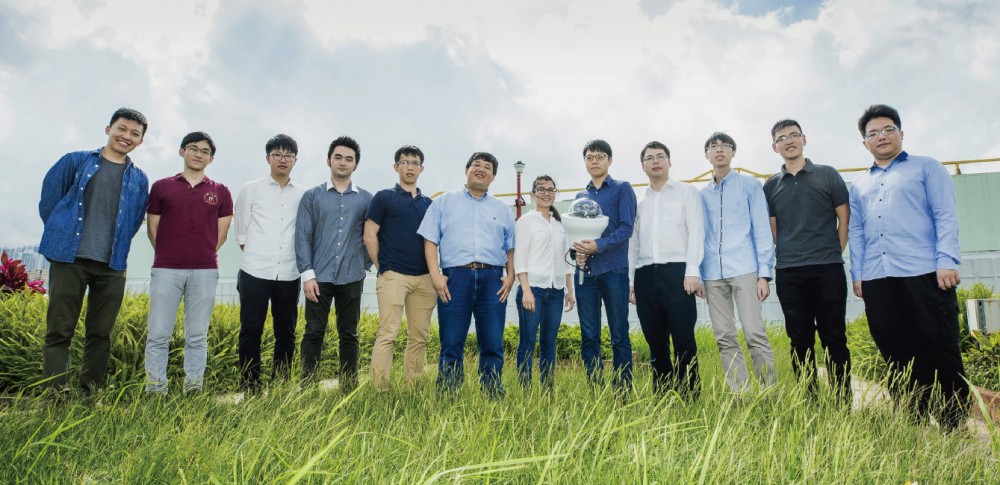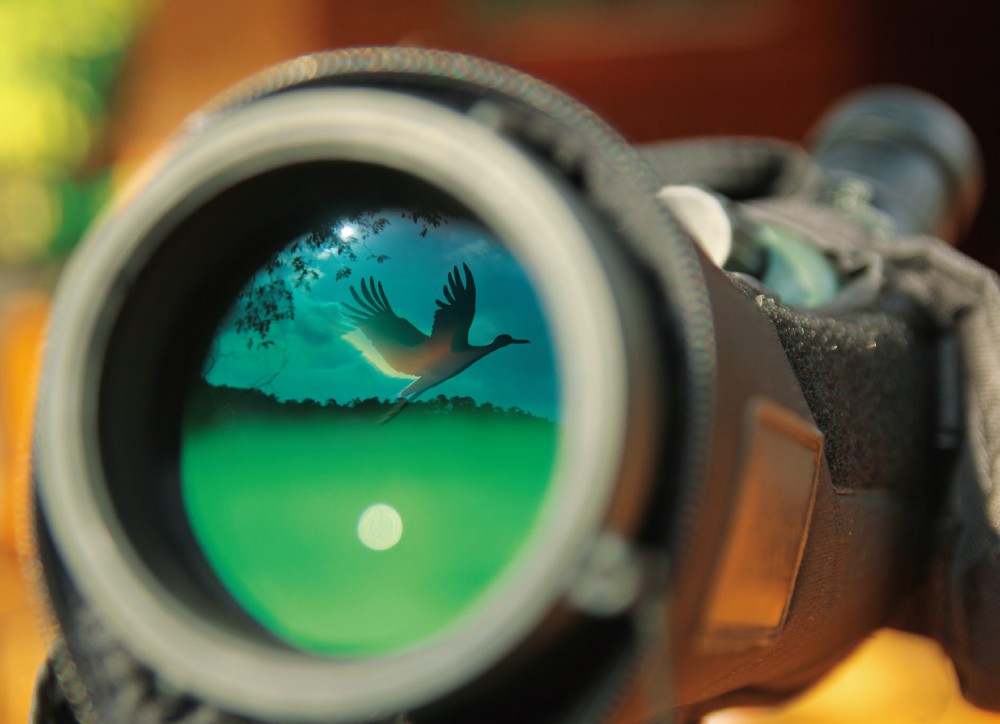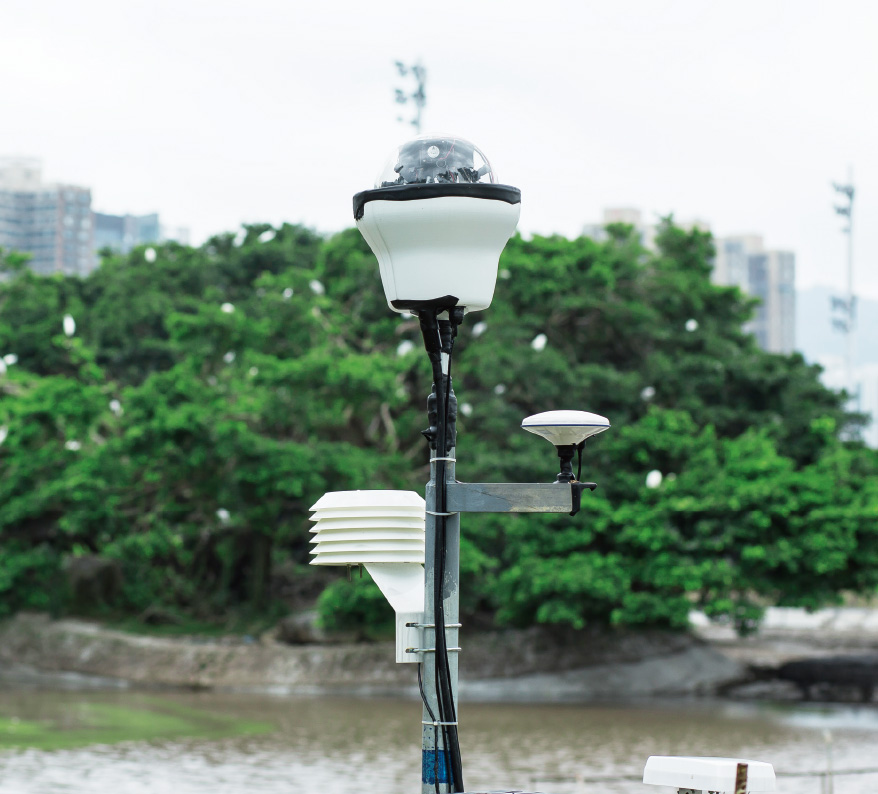 A keen birdwatching HKUST professor has launched Hoopoe, a research project that provides bird diversity and abundance statistics. This hobby-driven research is an interesting case of combining birdwatching with research.
A keen birdwatching HKUST professor has launched Hoopoe, a research project that provides bird diversity and abundance statistics. This hobby-driven research is an interesting case of combining birdwatching with research.
 Despite its small area, Hong Kong is a roosting and stopover site for 550 species of migrating birds. Penfold Park, in particular, is home to sizeable Great Egret and Little Egret colonies. In June 2018, in preparation for the Relocation of Shatin Sewage Treatment Works to Caverns, the Drainage Services Department (DSD) partnered with a HKUST team to acquire and analyze image data 24x7 at Penfold Park with an AI system that monitors the eco-environment of egret habitats.
Despite its small area, Hong Kong is a roosting and stopover site for 550 species of migrating birds. Penfold Park, in particular, is home to sizeable Great Egret and Little Egret colonies. In June 2018, in preparation for the Relocation of Shatin Sewage Treatment Works to Caverns, the Drainage Services Department (DSD) partnered with a HKUST team to acquire and analyze image data 24x7 at Penfold Park with an AI system that monitors the eco-environment of egret habitats.
The AI system is named “Hoopoe”, which is Israel’s national bird. This species migrates from the north to the south every winter, and Hong Kong is one of the stopover sites on their flight path. However, only several pass through Hong Kong each year, so this species is rarely sighted locally.
Gaining insights into changes in the natural environment
The “Hoopoe” project is headed by Wang Yu-hsing, Professor and Associate Head of the Department of Civil and Environmental Engineering of the HKUST. He pointed out that birdwatching is a hobby of significant value. “Major engineering projects, such as sewage treatment works relocation, have potential impact on the diversity and abundance of plants, animals and birds. Birds are particularly sensitive to changes in their habitats. Collecting statistical data regularly allows early detection of changes in the natural environment. The management team can then be alerted to take appropriate actions to alleviate the impact associated with these projects.”
According to Wang, since no cameras with panoramic lenses on the market can adapt to such adverse weather conditions, and the device has to operate 24x7 to handle huge volumes of image data, the team had to develop their own lenses and optimized the hardware continuously. At the end, they produced and installed four devices with panoramic lens and analyzed the images with an AI camera to acquire the headcount and habit data of the egrets.
AI enables accurate identification at high angles
 Given their specific angles and distances, some images are hard to identify with the naked eye. One major challenge involving system software is to teach AI to identify bird species effectively. “Combining 3D modeling with real-life on-site photos, our team produced about 9,000 photomontages of Great Egrets and Little Egrets in various forms to enable on-going learning for the AI system.” Wang indicated that after a number of modifications, the system now has an identification accuracy of 85% to 90%, which is very high.
Given their specific angles and distances, some images are hard to identify with the naked eye. One major challenge involving system software is to teach AI to identify bird species effectively. “Combining 3D modeling with real-life on-site photos, our team produced about 9,000 photomontages of Great Egrets and Little Egrets in various forms to enable on-going learning for the AI system.” Wang indicated that after a number of modifications, the system now has an identification accuracy of 85% to 90%, which is very high.
Promoting extensive application
 “Hoopoe” can markedly reduce the workload of manual bird survey and eliminate time constraints. With such technological strength, it can be extended to support other government departments to enhance environment management in the future. Wang said that apart from the DSD project, the HKUST team is currently discussing cooperation with the Agriculture, Fisheries and Conservation Department (AFCD), which operates cameras at many locations across Hong Kong and finds it challenging and time-consuming to collate image data. Hoopoe’s intelligent image analysis capabilities should serve them well.
“Hoopoe” can markedly reduce the workload of manual bird survey and eliminate time constraints. With such technological strength, it can be extended to support other government departments to enhance environment management in the future. Wang said that apart from the DSD project, the HKUST team is currently discussing cooperation with the Agriculture, Fisheries and Conservation Department (AFCD), which operates cameras at many locations across Hong Kong and finds it challenging and time-consuming to collate image data. Hoopoe’s intelligent image analysis capabilities should serve them well.
What is more, this technology also has development potentials in construction or engineering. Wang and his team have applied AI image identification in civil engineering projects. One example is to detect building structure safety with AI camera lenses during building structure safety inspections. “In the blueprint for a smart city, AI can play a vital role in information collection and identification. I believe the “Hoopoe” system will prove its worth handsomely in the future.”




